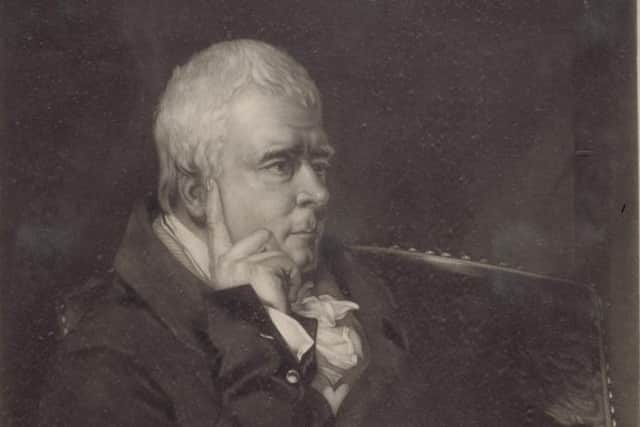Sir Walter Scott's musical adventures take centre stage in online exhibition


As this month marks the 250th anniversary of the birth of Sir Walter Scott, whose pioneering historical novels generated a picturesque image of Scotland within the wider European Romantic movement, it’s worth noting not just the impact of his Minstrelsy of the Scottish Border, which in 1802 first brought Border balladry – albeit just as text – to the reading public, but also his surprisingly extensive musical interests and influences, from Border piping to opera and beyond.
A recently launched online exhibition, Walter Scott and Song: Retuning the Harp of the North, runs until March of next year, curated by Aberdeen University’s Walter Scott Research Centre. Aiming to introduce “a lesser known Scott” to the public, the exhibition explores the Wizard of the North’s legacy in terms of folk song, opera and theatre, from the ballads he collected to popular songs such as Bonnie Dundee.
Advertisement
Hide AdAdvertisement
Hide AdProfessor Alison Lumsden, co-director of the Walter Scott Research Centre, explains that, as well as highlighting Aberdeen University’s rich Scott collections – having edited a 30-volume edition of Scott’s novels, they’re currently working on his poetry – they wanted to showcase lesser-known aspects of his work and influence. People, for instance, may know about Donizetti’s opera Lucia di Lammermoor, based on Scott’s Bride of Lammermoor, but they may be less acquainted with the fact that Schubert’s ubiquitous setting of Ave Maria originated in music he originally wrote for his song settings from Scott’s narrative poem The Lady of the Lake.
Lumsden is anxious for people to revise their thinking about Scott: “He was adapted into so many different forms and so much influenced the song traditions of the 19th century, in terms of song collections, people singing his songs in domestic settings and his influence on opera, but also his influence through theatre. There were so many adaptions of Scott for the stage, such as Rob Roy, with high proportions of music not by Scott but which popularised him.”
That trend continued into the 20th and 21st centuries, adds Lumsden, who points to the folk revival but also to things like Hail to the Chief, sung at US presidential elections, its lyrics originally from The Lady of the Lake, which was set to music early in the 19th century by James Sanderson.
“A lot of people think they know everything about Scott and don’t engage with him again. What we want to show with this exhibition is that they have experienced Scott, because he’s everywhere. They just haven’t made the connection.”
Further perhaps unlikely-sounding connections will be made at a Tribute to Sir Walter Scott planned for Aberdeen’s Machar Cathedral on 28 August, featuring jazz pianist Neil Birse, guitarist Tom Williams and singer Katie Mackie, among others.
And earlier this month, during Glasgow’s Piping Live! festival, the Lowland & Border Pipers’ Society, champions of Scotland’s bellows-blown pipes, included their own celebration of Scott’s acquaintanceship with piping. As well as such weel-kent balladry as The Twa Corbies, Gary West, Annie Grace, Anna Massie and others performed the once widely-played Jackie Latin, which Scott knew well, and which he name-checks along with other Border pipe repertoire in his great supernatural yarn, Wandering Willie’s Tale, a chapter of Redgauntlet often anthologised in its own right.
Scott’s uncle, Thomas Scott, was an eminent player of the Border pipes, and in Wandering Willie’s Tale, the protagonist, Steenie Steenson, piper to the (literally) hellishly formidable Sir Robert Redgauntlet, is similarly hailed: “A’ Cumberland couldna touch him at Jockie Lattin – and he had the finest finger for the backlilt [an old Border pipes technique] between Berwick and Carlisle.”
Advertisement
Hide AdAdvertisement
Hide AdThe plot involves Steenie following Redgauntlet to Hell to reclaim a crucial receipt for rent. Apart from enlightening us as to aspects of Border repertoire, it also lets slip some ripe examples of antique piperly invective. Never, in any pipers’ bicker, have I heard a player abused as “thou sack-doodling son of a whore”.
For further information, see www.abdn.ac.uk/library/events/16443 and www.walterscott250.com
A message from the Editor:
Thank you for reading this article. We're more reliant on your support than ever as the shift in consumer habits brought about by coronavirus impacts our advertisers.
If you haven't already, please consider supporting our trusted, fact-checked journalism by taking out a digital subscription at https://www.scotsman.com/subscriptions